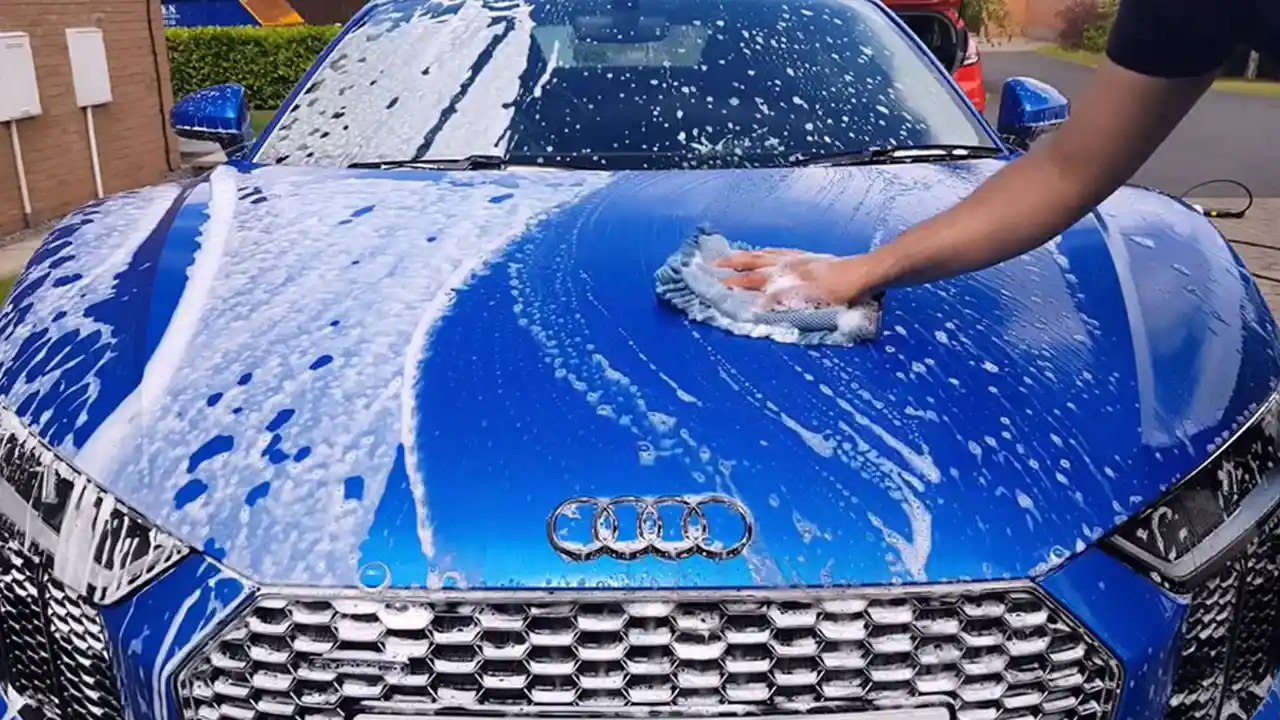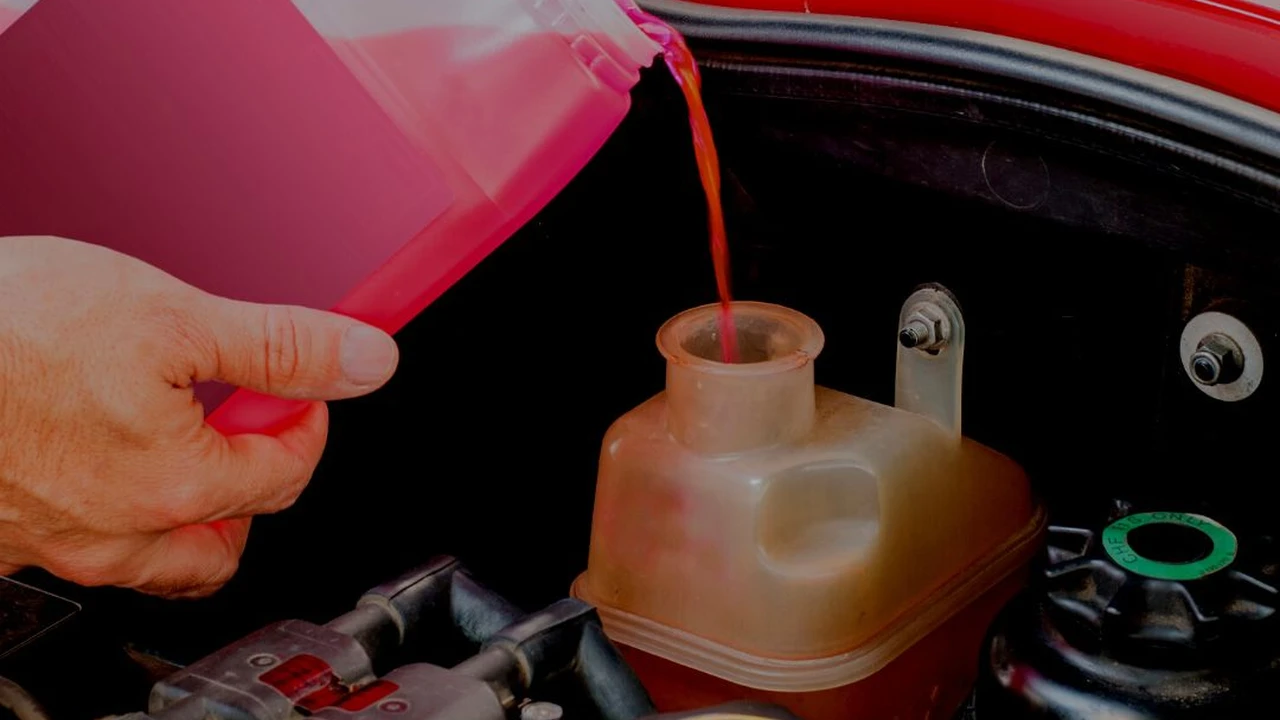Checking and Adding Windshield Washer Fluid: Maintaining Visibility

Why Maintaining Adequate Windshield Washer Fluid is Crucial for Safe Driving Car Maintenance Tips
Alright, let's talk windshield washer fluid. Seems simple, right? But trust me, running out of it at the wrong time can be a real pain, and even dangerous. Imagine you're cruising down the highway, a big ol' truck kicks up a spray of mud and grime, and BAM! You can't see a thing. That's where your washer fluid comes in, your unsung hero of road visibility.
Think of it like this: your windshield is your eyes on the road. Keeping it clean is just as important as making sure you're wearing your glasses or contacts if you need them. Road grime, bug splatters (ugh, those are the worst!), bird droppings (double ugh!), and even just plain dust can build up and severely reduce your visibility. And in bad weather, like rain or snow, it's even more critical.
So, why is this so important? Well, besides the obvious safety factor, driving with a dirty windshield can also be illegal in some places. You might get a ticket for obstructed vision, which is definitely not how you want to spend your day (or your money!). Plus, a clean windshield just makes driving more enjoyable. You can actually see the scenery, appreciate the open road, and, you know, not stress out about squinting through a layer of gunk.
How to Check Your Windshield Washer Fluid Level Quick and Easy Car Care Guide
Okay, so you're convinced it's important. Great! Now, how do you actually check the fluid level? It's easier than you think. First, pop the hood of your car. (If you don't know how, consult your owner's manual. Seriously, it's in there.) Look for a reservoir with a windshield wiper symbol on the cap. It's usually blue or white plastic and clearly marked.
Once you've found it, open the cap and take a peek inside. You should see a fill line indicating the maximum level. If the fluid is below that line, it's time to top it off. If you can't see the fluid level easily, you can use a clean dipstick (like a screwdriver or even a clean chopstick) to check. Just dip it in, pull it out, and see how far up the fluid reaches.
If your reservoir is completely empty, don't panic! Just refill it. But if you find yourself constantly running out of fluid, there might be a leak somewhere in the system. In that case, it's a good idea to take your car to a mechanic to get it checked out.
Step-by-Step Guide to Adding Windshield Washer Fluid The Right Way DIY Car Maintenance
Alright, time to refill that reservoir. Here's what you'll need: a bottle of windshield washer fluid (obviously!), a funnel (optional, but recommended to avoid spills), and maybe some paper towels to clean up any drips.
- Open the hood: Just like when you checked the fluid level, pop the hood and locate the windshield washer fluid reservoir.
- Open the cap: Remove the cap from the reservoir.
- Insert the funnel (if using): Place the funnel into the opening of the reservoir. This will help prevent spills.
- Pour in the fluid: Carefully pour the windshield washer fluid into the reservoir until it reaches the fill line. Don't overfill it!
- Remove the funnel: If you used a funnel, remove it and wipe it clean.
- Replace the cap: Securely replace the cap on the reservoir.
- Clean up any spills: Use paper towels to wipe up any spills around the reservoir.
- Close the hood: Carefully close the hood of your car.
And that's it! You've successfully added windshield washer fluid. Now you're ready to hit the road with a clear view.
Choosing the Right Windshield Washer Fluid Product Recommendations and Comparisons
Not all windshield washer fluids are created equal. There are different types for different climates and different needs. Let's take a look at some options:
- All-Season Windshield Washer Fluid: This is your basic, everyday fluid. It's designed to clean your windshield in most conditions and usually contains some antifreeze to prevent freezing in mild temperatures.
- Winter Windshield Washer Fluid: This type of fluid has a higher concentration of antifreeze, which protects it from freezing in extremely cold temperatures. It's essential if you live in an area with harsh winters.
- Bug Wash Windshield Washer Fluid: This fluid contains special detergents that are designed to remove bug splatters and other stubborn grime from your windshield. It's great for road trips or during the summer months when bugs are abundant.
- Water Repellent Windshield Washer Fluid: This fluid contains a water-repelling ingredient that helps to bead water off your windshield, improving visibility in rainy conditions.
Product Recommendations and Comparisons:
Here are a few specific product recommendations, along with their pros, cons, and approximate prices (prices can vary depending on location and retailer):
- Rain-X 2-in-1 Windshield Washer Fluid:
- Pros: Excellent water repellency, good cleaning power, helps prevent ice buildup.
- Cons: Can be a bit more expensive than other options.
- Usage Scenario: Ideal for areas with frequent rain or snow.
- Price: ~$10-15 per gallon.
- Prestone All Season Windshield Washer Fluid:
- Pros: Affordable, good all-around cleaning performance, widely available.
- Cons: Doesn't offer specialized features like water repellency or bug removal.
- Usage Scenario: Good for general use in most climates.
- Price: ~$5-8 per gallon.
- Invisible Glass Premium Glass Cleaner Windshield Washer Fluid:
- Pros: Excellent cleaning power, leaves no streaks, safe for tinted windows.
- Cons: Can be more expensive than other options, may not be as effective in extremely cold temperatures.
- Usage Scenario: Best for achieving a crystal-clear windshield, especially if you have tinted windows.
- Price: ~$12-18 per gallon.
- Nextzett Kristall Klar Washer Fluid Concentrate:
- Pros: Highly concentrated, excellent cleaning power, biodegradable.
- Cons: Requires dilution, can be more expensive upfront.
- Usage Scenario: Great for those who want a concentrated, environmentally friendly option.
- Price: ~$20-25 per liter (concentrate).
When choosing a windshield washer fluid, consider your climate, your driving habits, and your budget. Read reviews and compare prices before making a purchase. You can find these products at most auto parts stores, gas stations, and online retailers.
Troubleshooting Common Windshield Washer Fluid Problems Car Repair Tips
Sometimes, things don't go as planned. Here are a few common windshield washer fluid problems and how to troubleshoot them:
- No fluid coming out:
- Possible causes: Empty reservoir, clogged nozzles, frozen fluid, faulty pump.
- Troubleshooting steps: Check the fluid level, clean the nozzles with a pin or needle, try using a de-icer spray if the fluid is frozen, check the pump fuse. If the fuse is blown, replace it. If none of these steps work, you may need to replace the pump.
- Weak spray:
- Possible causes: Low fluid level, clogged nozzles, weak pump.
- Troubleshooting steps: Check the fluid level, clean the nozzles, check the pump for leaks or damage.
- Fluid leaking:
- Possible causes: Cracked reservoir, loose hoses, damaged pump.
- Troubleshooting steps: Inspect the reservoir, hoses, and pump for leaks. Replace any damaged parts.
- Streaky windshield:
- Possible causes: Dirty wiper blades, contaminated fluid.
- Troubleshooting steps: Clean or replace your wiper blades, try using a different brand of windshield washer fluid.
The Environmental Impact of Windshield Washer Fluid Sustainable Car Care Practices
Windshield washer fluid, like many automotive fluids, can have an environmental impact. Some fluids contain harmful chemicals that can pollute waterways and harm wildlife. Here are a few ways to minimize your environmental footprint:
- Choose biodegradable fluids: Look for fluids that are labeled as biodegradable or environmentally friendly. These fluids are made with ingredients that break down more easily in the environment.
- Avoid spills: Be careful not to spill fluid when refilling the reservoir. Clean up any spills immediately.
- Dispose of used fluid properly: Don't pour used fluid down the drain or into the ground. Take it to a hazardous waste collection facility.
- Use less fluid: Don't overuse your windshield washer fluid. Use it only when necessary.
Windshield Washer Fluid and Seasonal Car Maintenance Winter and Summer Considerations
The type of windshield washer fluid you use should depend on the season. In the winter, you'll need a fluid with a high concentration of antifreeze to prevent freezing. In the summer, you can use a fluid with bug-removing properties.
Here's a seasonal breakdown:
- Winter: Use a winter windshield washer fluid with a freeze point of at least -20°F (-29°C). This will protect your fluid from freezing in even the coldest temperatures.
- Summer: Use a bug wash windshield washer fluid to remove bug splatters and other grime. You can also use an all-season fluid, but you may need to clean your windshield more frequently.
- Spring and Fall: Use an all-season windshield washer fluid.
DIY Windshield Washer Fluid Recipes Alternatives and Homemade Solutions
If you're feeling adventurous, you can even make your own windshield washer fluid. Here are a few DIY recipes:
- Basic recipe: Mix 1 part white vinegar with 3 parts water.
- For extra cleaning power: Add a few drops of dish soap to the basic recipe.
- For winter use: Mix 1 part rubbing alcohol with 2 parts water.
Important: Always test your DIY fluid in a small area before using it on your entire windshield. And never use bleach or ammonia, as these can damage your car's paint and rubber seals. Also, keep in mind that homemade solutions might not offer the same level of freeze protection as commercial fluids.
The Importance of Wiper Blades in Conjunction with Windshield Washer Fluid Car Safety Essentials
Your wiper blades work hand-in-hand with your windshield washer fluid to keep your windshield clean. If your wiper blades are worn or damaged, they won't be able to effectively clear away dirt, grime, and water, even if you have plenty of washer fluid. Replace your wiper blades every six months to a year, or more often if they show signs of wear.
Signs of worn wiper blades include:
- Streaking
- Skipping
- Squeaking
- Torn or cracked rubber
By keeping your wiper blades in good condition, you'll ensure that your windshield washer fluid can do its job properly, and you'll maintain a clear view of the road.
Windshield Washer Fluid Myths Debunked Separating Fact from Fiction Car Care Misconceptions
There are a few common myths about windshield washer fluid. Let's debunk them:
- Myth: You can use water instead of windshield washer fluid.
- Fact: Water can freeze in cold temperatures, damaging your washer fluid system. It also doesn't contain the detergents needed to effectively clean your windshield.
- Myth: All windshield washer fluids are the same.
- Fact: Different fluids have different properties, such as antifreeze protection, bug-removing power, and water repellency.
- Myth: You only need to check your windshield washer fluid level once a year.
- Fact: You should check your fluid level regularly, especially during periods of heavy use, such as road trips or in bad weather.
Maintaining Visibility in Different Weather Conditions The Role of Windshield Washer Fluid in Safe Driving
Windshield washer fluid is especially important in certain weather conditions:
- Rain: Washer fluid helps to clear away rain and road grime, improving visibility.
- Snow: Washer fluid helps to melt ice and snow, preventing buildup on your windshield.
- Sun: Washer fluid helps to remove glare and reflections, improving visibility in bright sunlight.
- Dust: Washer fluid helps to remove dust and dirt, keeping your windshield clean and clear.
By using windshield washer fluid regularly, you can maintain a clear view of the road in all types of weather conditions.
Advanced Windshield Washer Fluid Systems Features and Technologies Modern Car Care
Some newer cars have advanced windshield washer fluid systems, such as:
- Heated washer fluid nozzles: These nozzles heat the washer fluid before it's sprayed onto the windshield, helping to melt ice and snow more quickly.
- Rain-sensing wipers: These wipers automatically adjust their speed based on the amount of rain falling on the windshield.
- Adaptive cruise control: This system uses sensors to maintain a safe following distance from the car in front of you, even in bad weather.
These advanced features can help to improve visibility and safety, especially in challenging driving conditions.
:max_bytes(150000):strip_icc()/277019-baked-pork-chops-with-cream-of-mushroom-soup-DDMFS-beauty-4x3-BG-7505-5762b731cf30447d9cbbbbbf387beafa.jpg)






